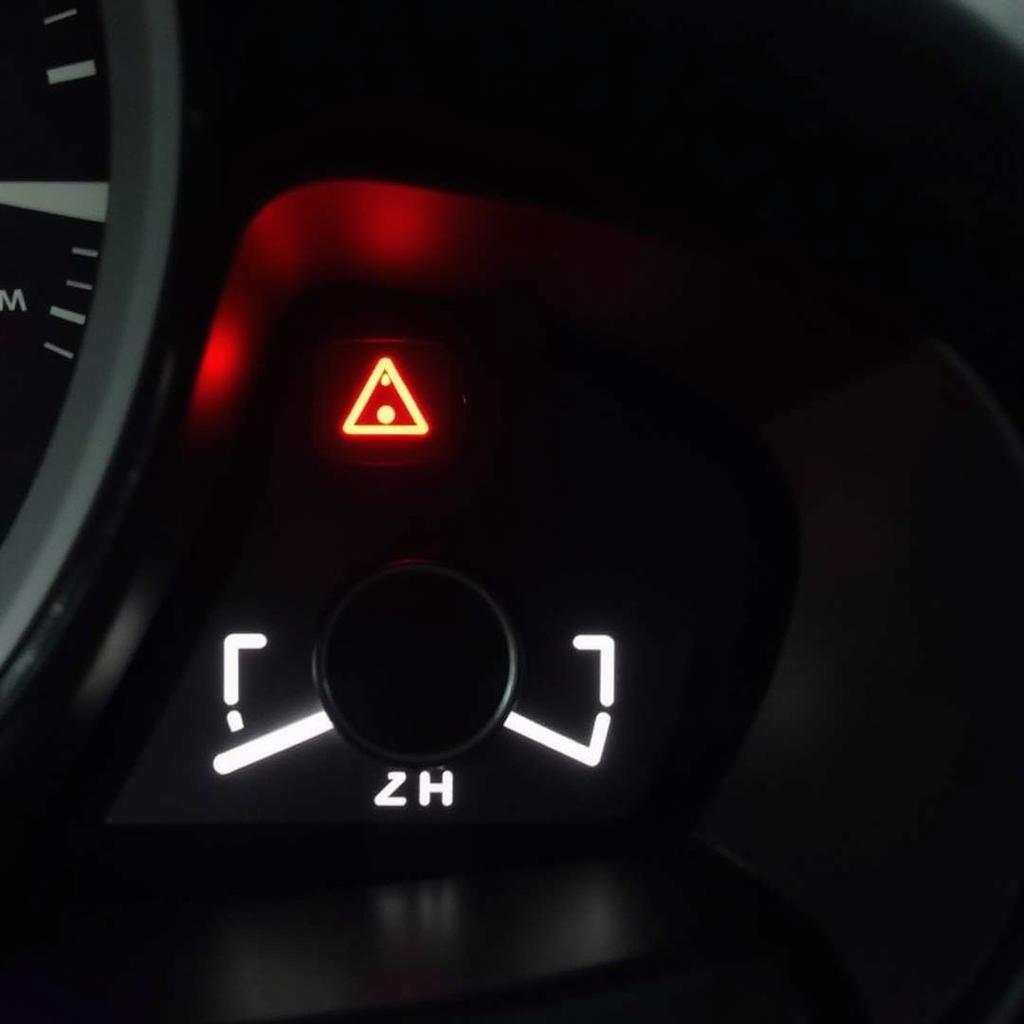Undersized car batteries can lead to a range of frustrating issues, from slow starts to complete electrical failure. This guide will delve into the common problems associated with using an undersized battery, how to diagnose them, and ultimately, how to choose the right battery for your vehicle.
 Undersized Car Battery Problems: Dim Headlights and Slow Cranking
Undersized Car Battery Problems: Dim Headlights and Slow Cranking
Many drivers are unaware they have an undersized battery until problems arise. A smaller battery may initially seem to work fine, especially in newer cars. However, as the battery ages or the electrical demands of the car increase, the inadequacies of an undersized battery become apparent. Having the wrong battery in car symptoms can be misleading, often mimicking other car problems. This can lead to unnecessary repairs and wasted time. For example, you might suspect a failing alternator when in fact, the battery is simply too small to handle the car’s electrical load.
Recognizing the Signs of an Undersized Car Battery
So, how do you know if your battery is undersized? There are several telltale signs.
- Slow Cranking: This is perhaps the most common symptom. The engine cranks slowly or struggles to turn over, especially in cold weather.
- Dim Headlights: Headlights that appear dimmer than usual, especially when other electrical systems are running, can indicate an undersized battery.
- Electrical System Malfunctions: Issues with the radio, power windows, or other electrical components can also be attributed to a battery that isn’t providing sufficient power.
- Clicking Sound When Starting: A rapid clicking sound when you turn the key is a classic sign of a low battery charge, often exacerbated by an undersized battery.
- Frequent Jump Starts: If you find yourself frequently jump-starting your car, it might be time to consider whether your battery is the correct size.
“An undersized battery is like trying to power a refrigerator with a flashlight battery,” says John Miller, a seasoned automotive electrical engineer. “It might work for a short time, but eventually, it’s going to fail.”
Diagnosing an Undersized Car Battery
Diagnosing an undersized battery requires more than just checking the voltage. While a low voltage reading can indicate a problem, it doesn’t necessarily confirm that the battery is undersized. You need to check the battery’s CCA (Cold Cranking Amps) rating and compare it to your vehicle’s recommended CCA. This information can be found in your car’s owner’s manual or online. A simple battery test can reveal whether your battery is meeting its CCA rating. If the battery is testing significantly lower than its rated CCA, and that rating is below your car’s requirement, you likely have an undersized battery.
Choosing the Right Battery Size
Selecting the right battery involves more than just picking the biggest one you can find. You need to consider your car’s make, model, and engine size. Consult your owner’s manual or an online battery finder tool to determine the correct group size and CCA rating for your vehicle. “Don’t just guess,” advises Maria Sanchez, an automotive technician with over 20 years of experience. “Using the correct battery is crucial for the overall health and performance of your vehicle’s electrical system.”
Fixing the Problem: Installing the Correct Battery
Once you’ve identified that your battery is undersized, the solution is straightforward: replace it with the correct size. While this is a relatively simple task, it’s essential to follow safety precautions. Disconnect the negative terminal first, then the positive. When installing the new battery, connect the positive terminal first, followed by the negative.
Conclusion
Undersized car battery problems can be easily avoided by ensuring you have the correct battery for your vehicle. By understanding the symptoms, diagnosis process, and selection criteria, you can keep your car running smoothly and avoid the frustration of a dead battery. Don’t underestimate the importance of the right battery; it’s a crucial component for a reliable and well-functioning vehicle. If you are experiencing any of the symptoms mentioned above, check for wrong battery in car symptoms or consider seeking professional advice to diagnose and resolve the issue. If you’re looking for wiring diagrams for specific car models, you might find information on resources like a 2001 lincoln town car radio wiring diagram.
FAQ
-
What happens if I use a bigger battery than recommended? While a slightly larger battery might not cause immediate problems, it could strain your alternator over time.
-
Can an undersized battery damage my car? Yes, an undersized battery can lead to electrical system malfunctions and potentially damage sensitive components.
-
How often should I replace my car battery? Typically, car batteries last between 3 and 5 years.
-
How can I test my car battery’s CCA rating? You can use a battery tester, which is available at most auto parts stores.
-
What is the difference between CCA and CA? CCA (Cold Cranking Amps) measures a battery’s ability to start an engine in cold temperatures, while CA (Cranking Amps) measures its starting power at higher temperatures.
-
Can an undersized battery drain faster? Yes, an undersized battery is constantly working harder to meet the car’s electrical demands, leading to faster discharge and a shorter lifespan.
-
Where can I find the recommended battery size for my car? Your car’s owner’s manual is the best place to find this information.

